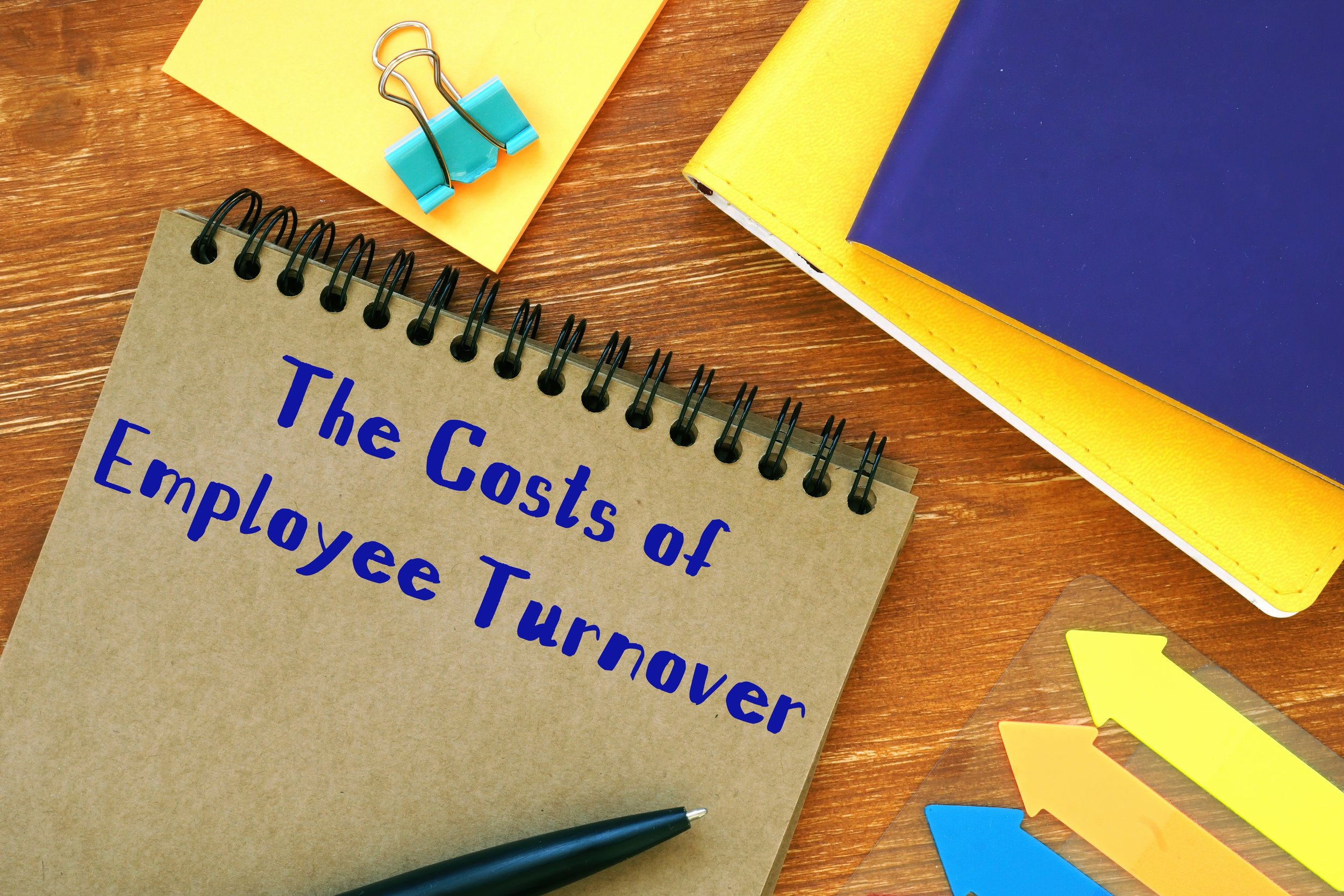The Importance of Employee Development: Part 2
Welcome to our Cannabis Operators Blog and to our Learning Community!
This is our 2nd post focused on Employee Development and the cost of employee turnover. Thank you for joining us and we hope the information is useful.
Do your Human Capital expenses always seem to exceed your budget? It’s not surprising!
In almost every business, in every industry, Human Capital is usually the single largest budget item. It’s easy to budget for people. A full-time equivalent (fte) team member works 2080 hours per year based on a 40-hour work week.
Multiplying your team members hourly pay rate x 2080 provides their annual wages. Depending on what type of benefits your company offers, and the rates applicable for state and federal taxes, adding an additional 25% for an employee with benefits is usually a good starting point. Add 10% for an employee without benefits.
Using a QuickBooks employee cost calculator, the following is an example for the State of Missouri.
Your new dispensary hire makes $20 per hour. Most dispensaries don’t offer basic benefits which would include retirement and health, dental & vision, and life insurance. In this example, taxation is the only addition cost.
$20 per hour x 2080 hours = $ 41,600.00
Taxation = $ 4.581.56
Total employee annual cost = $ 46,181.56
There are, however, many other variables that increase employee costs, which makes budgeting more difficult. Over the past several years, there have been many Federal and State employment laws that employers must adopt and may certainly cost you. In Missouri for example, employers must also comply with labor laws such as:
When federal laws are different from Missouri labor laws, companies must comply with the law that provides their workers the best protection.
Do you budget for:
In anticipation that an employee becomes a new parent
If a loved one dies and your employee needs bereavement time off (paid or unpaid)
Overtime when an employee quits and someone else must work additional hours
Vacation Time
Background checks, testing services, employee referral bonuses and required certifications?
Have you accounted for all your hiring expenses? For example, when you first bring on a new hire, you may experience an initial decrease in productivity as the new hire learns their role. It’s also safe to expect lost time from current employees as they participate in the hiring process and help the new hire to acclimate to your culture. This transition period may also negatively affect your customer experience.
Employee turnover is costing you money!
Employees are expensive, and most companies do not properly budget for all the related costs.
The average onboarding procedure consists of 54 different activities (Zavvy)
The average employer spends over $4,700 and 24 days to hire a new worker (SHRM)
According to a Training industry report, companies spend an annual average of 57 hours and $954 to train each employee.
A study from Boston College, Harvard University, and the University of Michigan found that soft skills training, like communication and problem-solving, boosts productivity and retention by 12% and delivers a 250% return on investment based on higher productivity and retention.
94% of employees would stay longer at a company if it offered learning and development opportunities (Gallup).
Only 7% of employees understand how their role contributes to company goals (Gallup)
Strong onboarding processes can improve new hire retention by 82%. (Glassdoor)
88% of companies don’t have a good onboarding process (Gallup)
The process of introducing new employees to your organization’s culture and equipping them with the tools they need to succeed is the hallmark of a great employee onboarding and development program.
Employee Development training ensures your employees have the knowledge and skills to deliver the best customer experience. Because employee onboarding has a huge impact on employee retention, engagement, and productivity, it’s important to get it right.
Is the right Employee Development learning platform worth your investment?
A dispensary of 20 employees can expect a turnover rate of 15 to 20% annually. Over five years, that would be 15 to 20 new employees to recruit, onboard and train. Some of you will have an even higher rate.
Using the previous recruitment data, during the five-year period based on a conservative 15% turnover rate, you will invest $70,500 and 360 employee hours devoted to recruitment.
At a 20% rate, your five-year investment will be $94,000 and 480 hours.
Remember, this does not calculate lost productivity and a probable temporary decrease in the customer experience.
The research regarding employee turnover shows that 94% of employees would stay longer at a company if it offered learning and development opportunities. If implemented correctly, you would experience a significant decrease in turnover and related expenses.
Conclusion
We know that employee turnover is expensive. We also know that a great employee onboarding and training program will help to reduce your employee turnover rate.
If you can significantly reduce your turnover rate, your expenses will decrease while better maintaining your exceptional customer experience.
If poor onboarding and a lack of continuing development are hurting your brand and bottom line, you have a problem! You can solve the problem with the right employee Learning Experience Platform.
The most important characteristic for growth is insatiable curiosity. The minute you know it all, you’re dead.
Jennifer Colosimo
Thank you for joining our learning community. As always, if you have any questions about Employee onboarding and continuing development, do not hesitate to contact us. We are here to help you simplify your operations!

